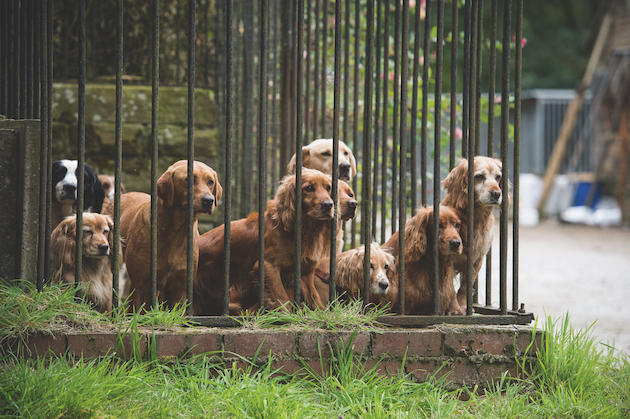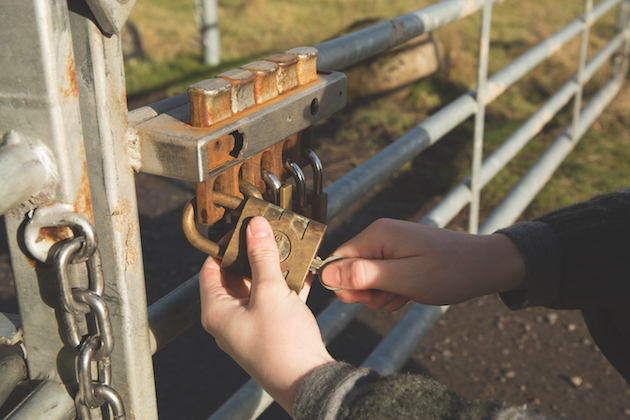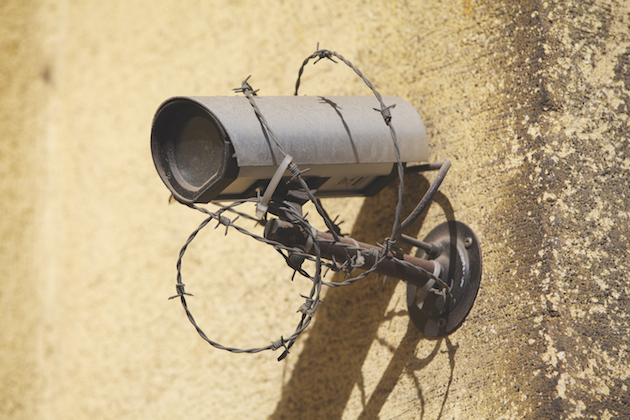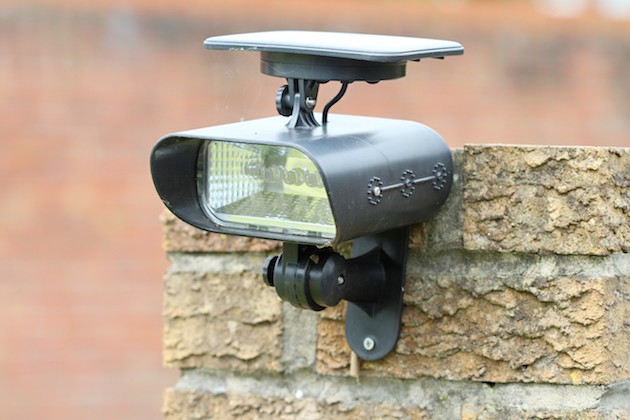Win CENS ProFlex DX5 earplugs worth £1,149 – enter here
What can you do to keep your gundogs safe from being stolen?
 spaniels in kennel
Usd 19 aug 20 gundog security
spaniels in kennel
Usd 19 aug 20 gundog security
It was a sobering experience. The grinder buzzed, sparks flew and in a few seconds the padlocks parted. A friend knocked on my door one morning. He had lost his workshop keys. He had started on one hardened steel lock with a hacksaw and after a lot of cutting had made a small groove in one of the three locks — did I have anything that would get the job done more quickly?
I fetched a battery-powered angle grinder and a metal cutting disc from my own shed. Being a law-abiding chap I had never cut a lock before and I doubted if this little 18-volt grinder would achieve much. It took less than five minutes to slice off every lock and to let him back into his workshop.

If thieves cannot cut through the padlock, they will try to find a weak bolt or bar
Were my gundogs safe?
At home I looked at the unbranded padlock that secured my dog kennel. A tool available at every good DIY shop would have that kennel open in under a minute.
Dog theft is booming across the country and gundogs are a favoured target. Most gundogs are pretty good natured; they are unlikely to sink their teeth into a potential thief. Their puppies are also much in demand as pets and with cockers currently being offered at £3,000 each, supply is clearly not keeping up. Crucially many gundogs live in outdoor kennels where they can much more easily be snatched than house dogs.
So I decided to look into the question of how best to keep my gundogs safe. It has been law since 2016 that all dogs over the age of eight weeks must be microchipped, but do make sure the chip details are up to date.
A few months ago we moved house into a new half-completed property. I have yet to build a kennel, so for the meantime the dogs are sleeping in the kitchen and spending the day on the sofa. For some owners the simple step of bringing your dogs inside will be practical and effective. Not only does this hide them from prying eyes, but it also means that any criminal would have to commit burglary rather than plain theft to take them. Burglary not only carries a higher risk of being caught, it also carries twice the maximum sentence of plain theft. But for many gundog owners bringing the dogs inside isn’t an option.
My dogs will be going back outside as soon as I have cleared a space and poured some concrete and when they do I want my gundogs safe.
A few months ago I spoke to Wayne May, one of the country’s leading experts on gundog theft. His top advice is to stay off the radar. “Social media is one of the main ways thieves identify targets,” he says. “We all like to talk about how good our dogs are and through our posts the dog’s name becomes recognised. They can put that together with other information and use it to target your dog.”
Drone
But a recent case in Ireland shows the lengths criminals are willing to go to to identify targets. Shooting Times reported on the theft of a springer bitch and her puppies belonging to Rachel Doyle. She had carefully kept the dogs off social media and had kept them indoors before moving them to a kennel which is not overlooked; however, police believe a drone may have been used to surveil the house and kennels.
Last week in North Wales drones were spotted flying around farm buildings while the operators remained hidden, leading police to believe the farms are being ‘cased’.
Determined criminals can and will identify dogs they wish to steal, so how can we keep them out? We are lucky to have an excellent Police Scotland rural crime officer and he introduced me to the concept of ‘the onion’; having as many layers of security round your dogs as possible.

Recording cameras provide more security
Keeping gundogs safe from vehicles
Preventing vehicle access is often the outermost layer of the onion. In another case we reported, gamekeeper Reece Ronald’s dogs were taken after a vehicle was used to rip the front off their kennel. A heavy and well-locked gate at the entrance to your property may be enough to deter thieves, but you should site kennels so that vehicles can not reach them.
For Reece such measures weren’t possible but if you can implement them, you should. If you can’t block access, consider parking your own vehicle in a place that stops thieves’ transport getting to kennels.
If blocking vehicle access is the outer layer of the onion, the next one is around the property itself. The same things that help keep a home secure also keep a kennel secure. Motion-activated lights are highly effective. Wherever possible, walls, fences and even thorny plants should be used to steer potential thieves on to areas covered by sensors.
Lights are even more effective when backed up with CCTV cameras; they will shoot quality footage and store many hours of it on dedicated hard drives. Cameras should always be backed up with clear signs placed at the entrances to your property indicating that they are in operation.

Motion sensor lights provide more layers to the security ‘onion’
Brute force
The final layer of the onion is at the kennel. Horrified at the ease with which a padlock can be cut, I began to look for the alternatives. Most padlocks are inherently vulnerable to cutting and brute-force attacks. Any method that is practical for securing a kennel can be defeated relatively quickly and easily.
Challenge
The largest and most expensive motorcycle chain locks take a few minutes to cut through, with around 50 to 60 seconds typical. Top-end padlocks such as the Abloy PL362T or the Abus 79172 37RK/80 will be a serious challenge to a thief, but if the steel gate you’re locking shut has a weak bolt or weak bars it is easier to ignore the lock and simply cut them.
So does that mean you shouldn’t bother locking your kennel? Of course not. Research on motorbike theft has shown that the installation of a £16 lock, readily breakable with a hammer and cold chisel, reduces the likelihood of a motorbike being stolen by a factor of three and a top-end lock reduces it by a factor of 10.
Few thieves want to stand around with a grinder roaring and spitting sparks or to pound away with a hammer. As my helpful police officer explained, they are looking for low-hanging fruit — things that can be stolen with minimal fuss and without attracting attention.
There is no one step that will make your gundogs safe, but relying on one layer of security is definitely a bad strategy. Ask yourself if you were a thief, would you try to steal the dogs from a property with the CCTV sign at the gate, the camera, the motion-sensor lights and the big padlock? Or would you try the one with the unlocked, unlit, unrecorded kennel that you could drive right up to?
When my two’s period of luxury finally ends, I will be making sure they are at the middle of a very large onion indeed.
Related Articles
Get the latest news delivered direct to your door
Subscribe to Shooting Times & Country
Discover the ultimate companion for field sports enthusiasts with Shooting Times & Country Magazine, the UK’s leading weekly publication that has been at the forefront of shooting culture since 1882. Subscribers gain access to expert tips, comprehensive gear reviews, seasonal advice and a vibrant community of like-minded shooters.
Save on shop price when you subscribe with weekly issues featuring in-depth articles on gundog training, exclusive member offers and access to the digital back issue library. A Shooting Times & Country subscription is more than a magazine, don’t just read about the countryside; immerse yourself in its most authoritative and engaging publication.







